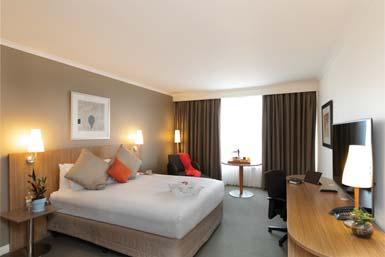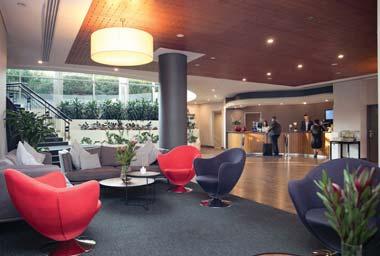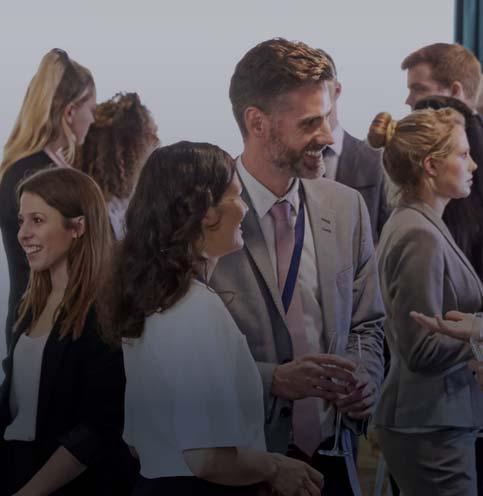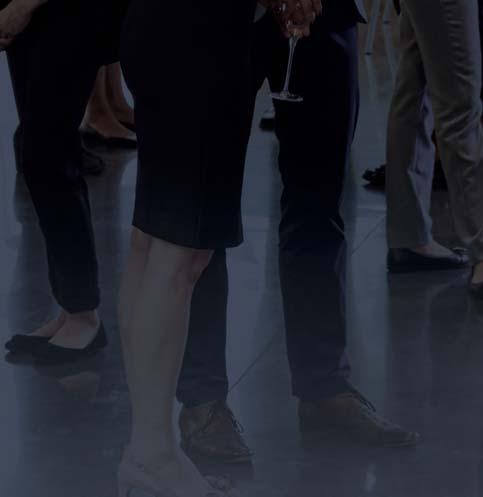
23 minute read
News
University’s space station connection
RED DWYER
Advertisement
WESTERN Sydney University and two national air forces are participants in a WSU research project destined to be a “world first” on the International Space Station.
A successful deployment has potential implications for defence, aviation and other specifi c areas, and commercial applications.
Funding from the Royal Australian Air Force with the design and development of the project – as part of its Plan Jericho delivering future technology systems to the air force – and collaboration with the United States Airforce have driven the project.
A rough sketch depicting the WSU mobile camera technology has led to stateof-the-art technology expected to be operational on the space vehicle in early 2021
Th e technology is an Australian-based innovation. WSU is leading the world and delivering a game-changing capability to Australia, according to its website.
Th e hardware is being assembled and tested in parallel at the university’s Werrington campus and at the US Air Force Academy in Colorado, with data beamed down to the International Centre for Neuromorphic Systems (ICNS) at WSU.
Th e ICNS in partnership with the United States Air Force Academy will deploy the ground-breaking technology to investigate recently discovered atmospheric phenomena which impact communications systems and high-altitude aircraft .
By chance WSU Associate Professor Gregory Cohen, lead ICNS researcher, met with US Air Force Academy staff and was asked to explain his research, in September 2018.
“Th ey asked him to impress them and he literally sketched a design on his [aircraft ] boarding pass and (they) asked ‘can you have it ready in February?’,” Lincoln Parker wrote in Australia Defence Magazine.
“We took it from a sketch on my boarding pass in September to an actual physical container with a telescope with an operational device in February that year and then it was deployed to Woomera
for testing in March [2019],” Professor Gregory Cohen said in the article.
“It was an enormous amount of work but we literally went from a sketch to a capability in a matt er of months.”
Th e Astrosite project includes two cameras and a payload which will be att ached to the side of the International Space Station.
From a sketch
“Th e project is just one of many applications of neuromorphic systems: the university is working with government, big-tech partners and local businesses to use this platform to solve real-world challenges and create new industry,” said Professor Sweeney. Professor Deborah Sweeney, Deputy Vice-Chancellor Research, Enterprise & International, in Manufacturers’ Monthly.
Stuart Ayres, Minister for Western Sydney, said WSU’s partnership with the US Air Force Academy was a “huge” vote of confi dence for the region and put Western Sydney on the global map.
In discussing the evolution WSU’s initial research to the Astrosite program and now to the International Space Station, Professor Hugh Durrant-Whyte, NSW Chief Scientist and Engineer had high praise.
“Developing, deploying and operating world-fi rst sensors on the International Space Station in a collaborative project with the US Air Force Academy is an outstanding accomplishment,” he said.
Th e ICNS has strong and ongoing partnerships with the Royal Australian Airforce and the Australian Defence Innovation Hub.
Th e technology raises the profi le of the potential of the aerospace and defence precinct adjacent to Western Sydney Airport, which will focus on building and accessing global supply chains within the aviation, space and defence industries.
10-year plan for Liverpool
LIVERPOOL City Councillors have ways, more street trees and vegetation,
unanimously endorsed a 10-year plan public art, bett er furniture, pedestrian to enhance the growing Liverpool city lighting and new paving materials are centre and provide benefits for deamong the improvements suggested in the cades to come. plan that will improve accessibility and
“Th e Liverpool City Centre Public amenity for people from all walks of life.” Domain Master Plan is Council’s 10-year Th e plan provides a cohesive apvision to guide the development of public proach to development in the city centre space and pave the way to a greener, and a useful set of standards for Council, more vibrant and active city centre while private developers and local businesses, fostering an 18-hour economy,” Liverpool with 76 Council projects in the pipeline Mayor Wendy Waller said. to provide meaningful work during con
“Wider footpaths, dedicated cyclestruction.
“Th e 76 Council projects highlighted in this plan will super-charge our fast-growing city centre, ensuring it remains a great place to live, work, invest, study and visit,” Mayor Waller said.
“Over the next 12 months, we’ll be planting 245 mature trees and upgrading pavements along many well-used city centre streets.”
Visit www.liverpool.nsw.gov.au/pdmp for more information and to view the Liverpool City Centre Public Domain Master Plan.
Mercure Sydney Parramatta
With restrictions easing we would like to say hello and welcome you back.




Big Girls founder describes her ideal job candidate
Retail workers must be tech savvy
DALLAS SHERRINGHAM
RETAIL job skills have changed forever during the Covid-19 pandemic with workers now required to have considerable tech skills on top of the ability to sell according to a business leader.
Karen Edbrooke, founder of lingerie outlet ‘Big Girls’, said the future of retail had changed dramatically and inevitably because of the lockdown’s forced switch to online sales.
“We have discovered that retail jobs now require signifi cant tech skills above most other abilities,” Ms Edbrooke said.
“With social distancing restrictions in place, Covid-19 has pushed many Australian businesses into the world of e-commerce. And, people are shopping online more than ever.
Ms Edbrooke said her new ideal retail worker must have: • Strong online communication skills. • Excellent typing skills. • Sound written English. • Excellent tech skills. • In depth knowledge of how to use social media. • The ability to use online chat.
Ms Edbrooke’s ideal employee must be IT literate, tech savvy, know how to engage with customers via Skype and other online platforms, have an outstanding understanding of social media, have an excellent typing speed, great writt en skills and understand how to produce video content that stands out in the competitive retail market.
Above: founder Karen Edbrooke and models showing off her products.

In addition, she believes staff mem- bers with great online communications skills are essential for helping customers navigate this new world of e-commerce these skills will be desirable for most retailers moving forward.
“Our online sales have grown by over 50% during isolation – these numbers really surprised us! We have worked incredibly hard to increase our online services, support and marketing so that we can provide lingerie to women all over the country,” she said.
“We’ve ramped up our virtual bra fi tt ings which are now delivered over extended hours via Skype and Facetime. Fitt ing sessions are taking longer as staff now also showcase styles and diff erent products as part of the process.
“Our staff need to be able to assist customers with their technology needs to ensure they are able to undertake the virtual sessions with ease. Some of

our customers are not that technology savvy and need help to work things out.
“We have increased our campaigns and communications via social media. We have also introduced live streamed fashion parades and product forums to enable our customers to immerse themselves in our virtual showroom from the comfort of their homes. Our live chat service has increased by over 100%.
Big Girls is the country’s leading independent online retailer of lingerie and swimwear for women of all sizes.
Founded by Ms Edbrooke 28 years ago aft er she sustained serious injuries in a car accident and decided to take her career in a new direction, the company has evolved from a small shop to a huge operation that sees products shipped to every corner of the country as well as overseas.
“Due to the recent growth of online sales, we have employed 15 new staff members,” Ms Edbrooke said.
“Our expansion plans had been in place for a while, however COVID-19 really accelerated this process. As a team, we realised that our online services and off er- ings were more important than ever in this heightened time of worry and isolation. We are so thrilled that we went ahead with the expansion and will not be looking back.”
Th e company is also one of the country’s biggest retail innovators, off ering virtual fi tt ings and its latest innovation, Big Girls TV.
Big Girls TV is an online lingerie show for plus size and curvy women delivered via the internet. Shows include the live streaming of lingerie fashion parades and other informational segments using real life everyday Australian women as models and the inclusion of a presenter who comperes the segments and responds to questions real time sent in from viewers during the course of the show.
www.biggirls.com.au www.facebook.com/BigGirlsDontCryAnymore/
Huge new jobs precinct unlocked
PLANS for a major industrial precinct on the doorstep of the new Western Sydney Airport have been approved today by the NSW Government, paving the way for a significant boost to jobs and investment in the region.
Approval of the $2.6B Mamre Road Precinct, one of 12 key precincts in the Western Sydney Aerotropolis, will unlock 850 hectares of new industrial land and see the creation of new public spaces and conservation areas.
Premier Gladys Berejiklian said the green light for the Precinct is a signifi cant step forward in securing Western Sydney’s future as a global hub for logistics and advanced manufacturing.
“We’re gett ing on with the job of building a new city around the airport well before the fi rst plane takes off ,” Ms Berejikilian said.
“Th is land release will provide opportunities for international and domestic businesses to invest in Western Sydney,
Artist impression of the project.

enabling major warehousing, logistics, manufacturing, and circular economy operations to be established.
“It will also bring a huge jobs boost to the region, creating opportunities for more than 5,200 jobs during the construction phase alone.”
Planning and Public Spaces Minister Rob Stokes said the Mamre Road Precinct will also include 50 hectares of open space, including new cycling and walking paths that will open up previously inaccessible land to the public.
A further 70 hectares of conservation land, including the Cumberland Plain Woodland, will also be protected within the Precinct.
“Not only does this rezoning secure much-needed productive industrial land, it also safeguards critical environmental areas and provides some fantastic new public spaces for the future residents of the Western Parkland City,” Mr Stokes said.
Minister for Jobs, Investment, Tourism and Western Sydney Stuart Ayres said the rezoning is another milestone in the transformation of the Western Parkland City into a thriving hub, with new jobs, homes, infrastructure and open spaces.
Th e fi rst industrial estates for the Mamre Road Precinct are expected to be occupied from mid-2021.
Th e Mamre Road Precinct was one of 24 projects included in Tranche 2 of the NSW Government’s Planning System Acceleration Program that is fast-tracking planning assessments to keep people in jobs and the economy moving during the COVID-19 crisis. To date, the program has created opportunities for more than 16,400 direct jobs and almost $11B worth of economic investment across NSW.
For more information visit: www.planning.nsw. gov.au/mamreroad
Major roadworks at Parramatt a
NAVIGATING Parramatta will down measures, the Parramatt a Light around one of Australia’s largest health,
become easier following road Rail team has worked extended hours education, research and training hubs. upgrades completed as part of the to complete these works as quickly as ‘Enabling’ roadworks as part of the
Parramatta Light Rail program of possible,” Mr Constance said. Parramatt a Light Rail have also been works. “We have used this time to get ahead completed under extended working
Minister for Transport Andrew Conand deliver new footpaths for the comhours during the COVID-19 lockdown stance said the widening and resurfacing munity, as well as ensuring the provision period. of Hawkesbury Road, in association of vital access for the Westmead RedeO’Connell Street between Barney with the Westmead Redevelopment, velopment’s new Central Acute Services and Albert Streets in North Parramatt a marks the completion of Parramatt a Building.” has been widened to four lanes. Th is Light Rail preparation works in the Major works can now begin for the follows the recent transformation of Westmead Health Precinct. light rail at Westmead, which will transGeorge Street in the heart of Parramatt a
“In response to the recent lockport thousands of workers and students CBD to a two-way road.

Westmead road works.
BOOK DIRECT & SAVE 10%

FEEL AT HOME AT QUEST PENRITH
Ideally located in the regional hub of Penrith, Quest Penrith brings a new standard of accommodation to Western Sydney for the short and long stay traveller.
One and Two Bedroom
Apartments
24 hour onsite management
Complimentary high speed WiFi
Laundry facilities in apartments
Gymnasium
Business Lounge
Conference facilities Secure onsite car parking
Directly opposite Penrith
Train Station
150 metres to
Westfield Penrith
Selection of local restaurant chargebacks including delivery options
Pantry shopping service available


Culture of harming older workers
DALLAS SHERRINGHAM
MY 8-year-old grandson knows more about computers and the internet that I do and that underlines the biggest problem facing older workers in today’s tech orientated workforce.
Tech rules the world in offi ces and factories throughout the region with the former “number one” dominant att ribute – management skills and people relations – taking a back seat.
Th is has resulted in many older job applicants being told they are not a “cultural fi t” for the position.
What this really means is they are too old to fi t into the offi ce culture and much of that is to do with their lack of tech skills. Young people are being actively preferred for tech-heavy roles For example, Job Applicants are being asked to answer this question: How easy is it for you to strike up a good conversation with your younger colleagues in the offi ce kitchen?
It may seem like a strange question, but that is the benchmark some companies are using to decide who to hire and the assumption is that older Australians will not know what to say to their younger colleagues.
One 44-year-old jobseeker told PM media outlet his confi dence had begun to take a hit because aft er more than 100 job applications, and 30 fi nal round interviews, the feedback was always the same.
“You interviewed well, they really liked you, but they didn’t feel you were a cultural fi t for the role,” he said. “I mean what does that even mean?”
He feared it was a bit of a catch-all comment to imply he would not get along with his younger co-workers.
So, were his fears were well founded?
“Th e candidate you were talking about saying it’s used as a bit of a catch-all is true,” Mark Smith, the group managing director of recruitment fi rm people2people, said. RED DWYER ated manufacturers with facilities in
Western Sydney have teamed up with an international medical technology company to manufacture emergency hospital beds in response to COVID-19.
US-based Stryker, one of the world’s leading medical technology companies, through its Australian-based Stryker South Pacifi c, mapped a local supply chain including the three companies in Western Sydney, and one on the Central Coast, to create prototypes and begin production of the Emergency Relief Bed in Australia.
Th e beds were based on a design from the American company and adapted to suit local supply chains and standards.
- Kathryn Macmillan.
He shared his own example of a middle-aged candidate being passed over for not being the right cultural fi t in a call centre.
“We had a more mature guy that went in for the job,” he said.
“In the interview he came out thinking,
Th is was done in six days in partnership with the Australian government’s Advanced Manufacturing Growth Centre, said the Minister for Industry, Science and Technology, Karen Andrews – “an incredible feat”.
Demonstrating the power of Aussie innovation and collaboration, the minister said the AMGC helped to facilitate the partnership between Stryker South Pacifi c and A.H Beard, Padstow, AmTek Australia, Revesby, Fallshaw Wheels & Castors, Silverwater. And the fourth fi rm, Varley Group. Tomago.
Registered for use with the Australian Th erapeutic Good Administration (TGA) standards, the Emergency Relief Bed has been designed to accommodate patients in respiratory distress and provides critical surge capacity during the COVID-19 pandemic. ‘I can do this job’, but in the end he missed out because he was the wrong cultural fi t.
“Th at’s the way the client described it to us and that’s how we had to pass it on to him.”
In this example, the company went with a younger candidate.
“Th e reality is that they asked him how are you going to deal with this particularly stressful job with the inbound calls,” Mr Smith said.

Navigating Office Banter
“He said, ‘well I would engage in some banter in the kitchen with my colleagues’.
“Th at’s when the company turned to us and said, ‘you know what, he is probably not going to be able to engage in the banter in the kitchen with his colleagues because he really won’t have too much in common with them to talk about.
“So they went with another candidate who happened to be younger.”
But it is not just navigating offi ce banter that’s tripping up older Australian job candidates, Kathryn Macmillan, the man
Medical technology develops special bed
THREE Australian-owned and oper
aging director of 923 Recruitment, said.
“Th e ability of Australia’s manufacturing sector to respond in times of crisis demonstrates just how strong and adaptable our manufacturing industry is,” said Dr Jens Goennemann, AMCG managing director.
“Via the Stryker project, AMGC has linked a 130-year-old fabrication business, to a 120-year-old Australian matt ress manufacturer and a 100-yearold Australian caster company, all of whom are working side-by-side to deliver an advanced manufacturing solution to address the current COVID-19 crisis – it’s innovation and collaboration at its fi nest.”
“Th is rapid response [six days] is an incredible feat and shows how Aussie companies are quickly working together in the face of this unprecedented pandemic,” Minister Andrews said.
Her team places white-collar workers in fi nance, administration, sales, marketing and technical roles, from entry level to senior management.
She said for many admin and techheavy roles, companies were actively preferencing younger candidates.
“Perfect example of that is Single Touch Payroll,” she said.
“People in accounts need to be able to navigate a huge amount of soft ware: MyGov ID, Single Touch Payroll, and it’s really quite complex.
“So it’s that ability to be profi cient in that technological use.”
Ms Macmillan said she was seeing a preference from companies for younger people to take on those roles as opposed to older people who perhaps are not “digital natives”. “Th ere’s defi nitely a preference to take on younger people in those roles because of those perceptions,” she responded.
“So for people who are older it’s very important that they address that perception.”
Figures from the partly government-funded Centre of Excellence in Population Ageing Research show 18% of workers aged 55-64 believe their organisation discriminated on the basis of age in recruitment and selection.
Th is preference for younger candidates is starting to show up in the number of older Australians being forced on to government assistance programs.
Australians aged between 45 and 65 now make up about half of all unemployment support recipients, with more than 330,000 on the welfare payment as of September last year.
Recruiter Mark Smith said there was a need for older Australians to work on their job skills,
A report from Oxford Economics predicts millions of lower-skill workers will lose their jobs to machines over the next decade.
SOURCE: PM media
Th e fact that these beds can be manufactured from readily available components, shipped and stored as fl at-packs and then assembled on-site with hand tools demonstrated the kind of ingenuity that is helping Australia respond eff ec- tively to the COVID-19 crisis, she said.

COVID-19 UPDATE: PAGE 12.
Stroke patients now have access to 24-hour care
PATIENTS now have access to 24- rural stroke patients every year, giving In 2018-19, 13,651 people were hosthe launch of the statewide service, jointly hour critical care under a $21.7M them a much greater chance of surviving pitalised for a stroke in NSW. Of those, funded by the State and Federal governTelestroke service being rolled out and leading a normal life,” Mr Hazzard 32 per cent were from regional, rural or ments. across NSW. said. remote areas. “When a stroke strikes, it kills up
Health Minister Brad Hazzard said “People in regional and rural areas A successful pilot project in the Huntto 1.9 million brain cells per minute. the revolutionary service will expand to have a far greater risk of hospitalisation er New England, Central Coast and Mid Th is service will have an enormous up to 23 sites over the next three years. from stroke and this vital service will North Coast local health districts since impact by providing time-critical,
“Th e NSW Telestroke Service will reprovide them with immediate, life-saving 2017 has already helped 1200 patients. best-practice treatment that saves lives move geographical barriers and improve diagnosis and treatment from the state’s Th e Stroke Foundation’s Chief Execuand reduces lifelong disability,” Ms outcomes for thousands of regional and leading clinicians.” tive Offi cer Sharon McGowan welcomed McGowan said. WESTERN SYDNEY BUSINESS ACCESS JULY 2020 7
Just a little weekly exercise can help
How sport, fi tness beats depression
DALLAS SHERRINGHAM
GETTING out of your armchair and into the gym or on to the sports field is a great way to conquer depression according to an Australian expert.
Depression has been directly linked to low sports activity and can be a real handicap to struggling workers.
From a friendly game of touch footy to sweating it solo in the gym, most of us know that exercise is good for our health.
But beyond the obvious physical benefi ts, research led by University of South Australia expert in sports sociology Dr Katja Siefk en shows that sport can also protect us from developing serious mental health disorders.
Th e study, conducted in conjunction with colleagues at the MSH Medical School Hamburg, assessed levels of anxiety and depression among 682 German recreational athletes under diff erent sport conditions (amount and intensity), sett ings (indoor vs outdoors) and contexts (individual or team sports).
It found that people who exercise less than 2.5 hours a week are at risk of increased anxiety and depression.
Th e research indicates that athletes who meet World Health Organization’s (WHO) exercise guidelines (150 minutes moderate-intensity physical activity throughout the week for healthy adults aged 18-64 years) have a bett er mental health status than those who are less active.
Dr Siefk en said the fi ndings had valuable insights for mental health, particularly as mental health was oft en disregarded in public health recommendations around exercise.
“Mental health disorders are one of the most signifi cant health challenges of our time, contributing substantially to the burden of global disease,” Dr Siefk en said.
Retaining Strength
“Exercise is a key part of building and retaining both physical and positive mental health, but it’s important to recognise that diff erent exercise conditions can aff ect mental health in diff erent ways. “Understanding the factors that can infl uence or alleviate depression and anxiety are essential, but until now, there’s been insuffi cient proof about the optimal types – or amounts – of activity needed for positive mental health. “In this study, we found that people who did not meet physical activity recommenda RED DWYER
Macquarie University is the focus of a $35M centre of excellence which fabricates products which do not exist in the natural world.
A consortium centred on the university, has received the funds from the
Australian Research Council (ARC) to create an ARC Centre of Excellence in
Synthetic Biology, from 2020.
Th e Minister for Education, Dan
Tehan, said the university, regarded as
Australia’s leader in synthetic biology, was
Don’t be a couch potato.

tions, reported higher depression scores, independent of whether they practiced indoors or outdoors, individually, or in a team.
“We also found that the lowest depression and anxiety scores mostly occurred among indoor team athletes, but that athletes ideally placed to lead large-scale collaborative projects in this fi eld.
Th e centre is an international collaboration between seven Australian universities and 25 partners and is one of the largest combined eff orts in synthetic biology in the world.
“Macquarie University brought the fi eld of synthetic genomics to Australia and is a recognised global leader in synthetic biology research,” said deputy vice chancellor, research, Professor Isak Pretorius.
Synthetic biology is a new interdisciplinary area that involves the application undertaking vigorous-intensity physical exercise oft en recorded higher levels of depression.
“Th ere is also good evidence that outdoor exercise contributes to improved mental health and that doing sports together, or as part of a team, may positively impact our mental health substantially.
“So, it’s really a case of monitoring physical and mental capabilities on an individual basis. And, while we oft en hear the phrase ‘the more exercise, the bett er’, evidence shows that this is far more complex. “A healthy mind and body rely upon modest, achievable levels of physical exercise. For most of us, two and a half hours a week – or, say 30 minutes a day over fi ve days – is a reasonable
Th ese things don’t actually exist
ask to encourage positive mental health.” of engineering principles to biology, which aims at the re-design and fabrication of biological components and systems that do not already exist in the natural world, according to the university.
Th e centre, led by Professor Ian Paulsen, an ARC Laureate Fellow, aims to provide the technical innovation which would enable Australia to develop a vibrant bio-economy built on the country’s strong agricultural sector.
Another aim is to train the next generation of synthetic biologists capable of establishing the Australian bio-economy start-up companies of the future.
Youth Insearch is a very proud recipient of the 2019 Excellence in Small Business Award from the Western Sydney Awards for Business Excellence.

Over 33 years we have empowered 33,000 at-risk young Australians aged between 14-20 years to turn their lives around.
We are looking for corporate partners or pro-bono support from organisations which share our values, vision and mission. admin@youthinsearch.org.au 02 9659 6122


CONNECTING A UNITED PASSION TO GROW THE LOCAL BLACKTOWN ECONOMY

BECOME A MEMBER from $299











